China and Harvard: Historical Connections
Harvard has a long history of intellectual engagement with China.
In 1879, a scholar from Ningbo named Ge Kunhua became Harvard College’s first instructor in Mandarin Chinese. The books he brought from China were Harvard’s first books in an Asian language, and they formed the core of what is today the million-volume collection of the Harvard-Yenching Library. The Harvard-Yenching Library is the largest academic library for East Asian research outside of Asia.
In 1880, Ding Chongji, also from the Ningbo area, became the first Chinese student to enroll at Harvard. The number of Chinese students grew, and by 1908, they had formed a Chinese Students Club. Between 1909 and 1929, about 250 Chinese students earned Harvard degrees. Nearly half became professors, and more than a dozen became university presidents in China. Graduates also built careers as writers, mathematicians, climatologists, and leaders in medicine, banking, and diplomacy.
Over the next several decades, Harvard’s commitment to the study of China, and to learning both from and with Chinese scholars, steadily grew. The Harvard-Yenching Institute, founded in 1928, supported the development of what is today Harvard’s Department of East Asian Languages and Civilizations. The Institute offers doctoral and post-doctoral fellowships for study and research at East Asian and Southeast Asian universities. Harvard’s Fairbank Center for Chinese Studies, founded in 1955, is named after John K. Fairbank, Harvard’s professor of modern Chinese history, who not only raised the quality of Western studies of East Asia, but also—through the diaspora of his students, who filled academic positions across the United States—effected the widespread integration of Chinese studies into the American university curriculum. Today, many consider the Fairbank Center to be the premier center for the study of China in the United States.
This rich history of intellectual exchange between China and Harvard continues today. China’s brilliant students, faculty, and researchers come to Harvard, immeasurably enriching our intellectual community; and Harvard’s students, faculty, and researchers pursue with equal fervor a deeper understanding of China.
Scholars from around the world are supported by our libraries, which house the largest collection of East Asian materials outside of Asia. We are home to over 2,000 students and scholars, and a further 2,500 alumni, from Greater China.
China scholarship at Harvard flourishes as never before. The University has the greatest concentration of specialists in Chinese studies in the United States. From its beginnings with those books from Ge Kunhua, Harvard now promotes a deeper understanding of China through many institutions, of which the Fairbank Center is but one, including the Harvard-Yenching Institute and Library; the Department of East Asian Languages and Civilizations; the Asia Center; the Harvard China Fund; and the Harvard Center in Shanghai.
Explore the history of Harvard’s engagement with China:
- 1800s: Establishing transpacific ties
- Early Twentieth Century: The foundations of a discipline
- Mid-Twentieth Century: Cold War exchanges
- Late-Twentieth Century: Opening up
- Turn of the millennium: Deepening mutual understanding
- Contemporary era: Scholarship amid tension
1800s: Establishing Transpacific Ties
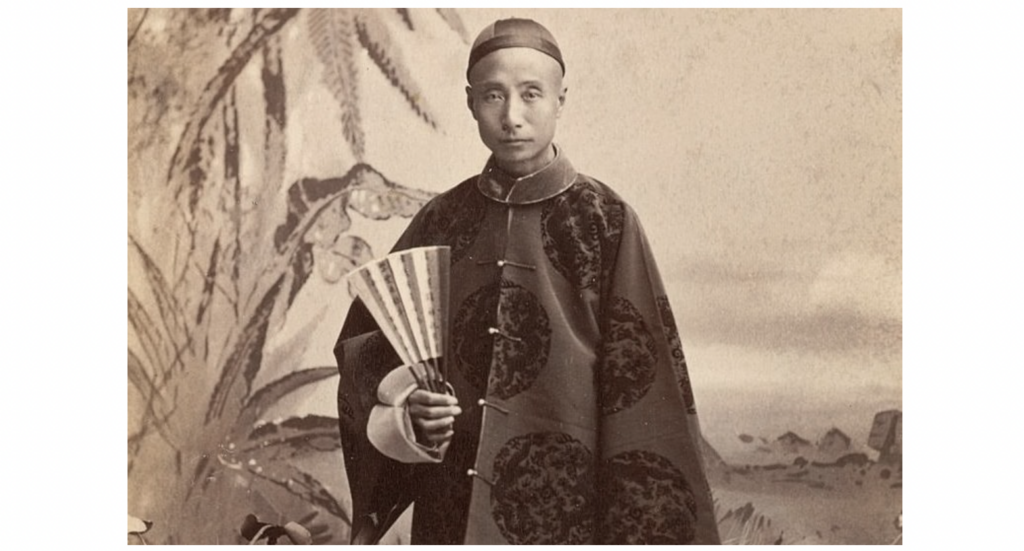
1879: Ge Kunhua (戈鯤化) is appointed the first Chinese language instructor at Harvard at the invitation of Francis P. Knight and Harvard President Charles William Eliot. At the height of the Chinese Educational Mission, Ge — a little-known China Studies scholar in Ningbo, Zhejiang Province —became the first native Chinese speaker to teach Chinese in America.

1879-1882
In September 1879, Ge sets sail for America with his wife and six young children, bringing with him a collection of Chinese literature that would later become the Harvard-Yenching Library’s Chinese Collection. For the next three years, Ge teaches Chinese language courses with a focus on classical Chinese; some enrolled in his classes are international students from the Chinese Educational Mission.
1881
Following diplomatic tussles, the Qing dynasty government recalls the Chinese Educational Mission over fears that Mission students enrolled in American secondary and postsecondary institutions would become too “Americanized.” Ge remains in America as his Chinese pupils return home.
1881
Shung Kih Ting, the first Chinese student at Harvard, enrolls in Harvard College.
1882
Ge contracts pneumonia in the late winter, passing away in February. Just three months later, U.S. President Chester Arthur signs the Chinese Exclusion Act into law. Following Ge’s death, Harvard suspends Chinese language courses for the following decades.
1897
Teung Chan Loon is the first Chinese student to graduate from Harvard.
Early Twentieth Century: The Foundations of a Discipline (1900-1940)
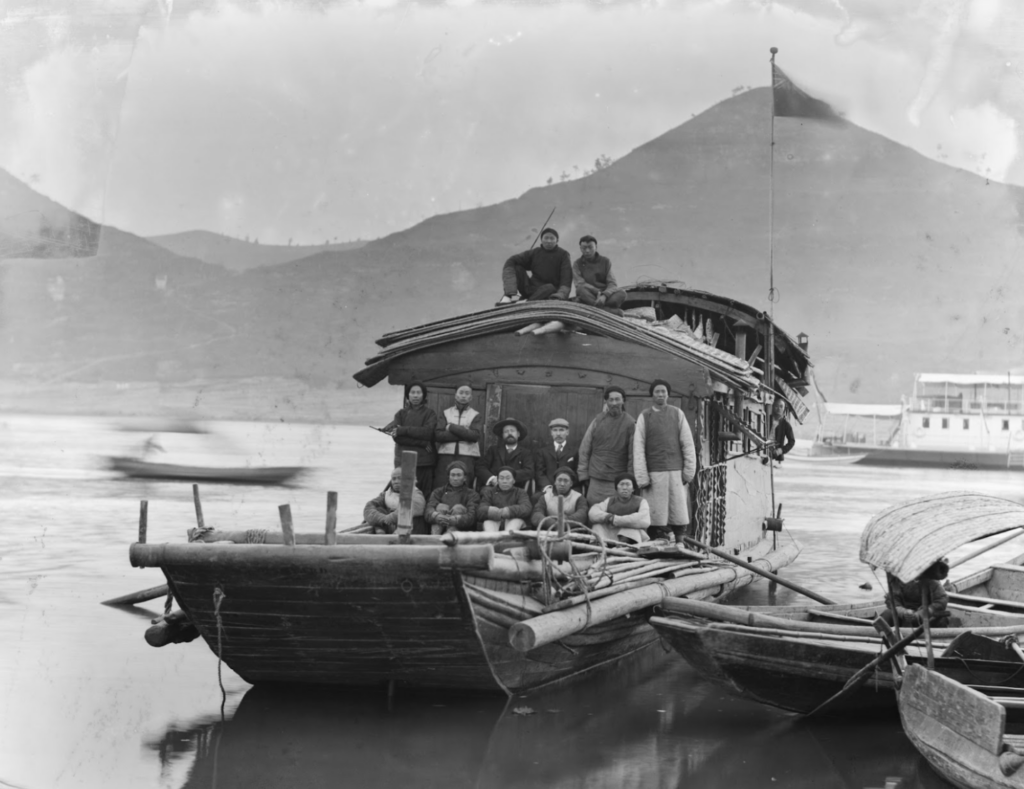
Ernest Wilson (center left), Walter Zappey (center right), and Wilson’s collecting team, on their houseboat, the “Harvard.” Archives of the Arnold Arboretum.
1907: Ernest Henry Wilson visits the city of Yichang in Hubei, China on his third trip to China and first plant collection expedition for the Arnold Arboretum of Harvard University, a botanical research institution and public museum of trees. Across four trips to China between 1899-1911, Wilson sends thousands of Chinese plant specimens and more than 4,000 photographic negatives back to America. The collection becomes an unmatched horticultural archive of China at the turn of the twentieth century.
1908
Harvard alumni form the Harvard Chinese Club.
1911
Harvard Medical School in Shanghai is established as a research laboratory and medical mission to “offer an eminently useful and beneficent career to well-equipped young men who were willing to devote their lives to medical teaching, research, and practice in China.”
1916
Harvard Medical School in China is closed due to financial constraints.

1924: Liang Siyong, the second son of renowned scholar Liang Qichao and future director of the Institute of Archaeology at the Chinese Academy of Sciences, graduates from Tsinghua University and travels to Harvard University to begin his studies in archaeology. Liang would later work with Li Ji, a fellow Harvard graduate and the “Father of Chinese Archaeology,” to pioneer archaeological excavations in the Anyang area and inaugurate the field of archeological study in China.
1927
Archibald Coolidge, Professor of History at Harvard College and the first director of the Harvard University Library, teaches the first course on East Asian History at Harvard. That fall, Professor Coolidge appoints A. Kaiming Chiu as the first Custodian of the Chinese-Japanese Collection at the Harvard College Library. Chiu would remain at the helm of what would become the Harvard-Yenching Library for forty years.
1929
The Harvard-Yenching Institute is founded at its first home in Boylston Hall, an Italian Renaissance styled building in the Old Harvard Yard. The Institute houses Harvard’s collection of more than 4,000 Chinese books and is officially named “the Chinese-Japanese Library of the Harvard-Yenching Institute (漢和圖書館).”
1929
John King Fairbank (费正清), future founder of the Fairbank Center of Chinese Studies, travels to England for a Rhodes Scholarship upon graduating from Harvard summa cum laude.
1932
Fairbank moves to Beijing to learn Chinese.
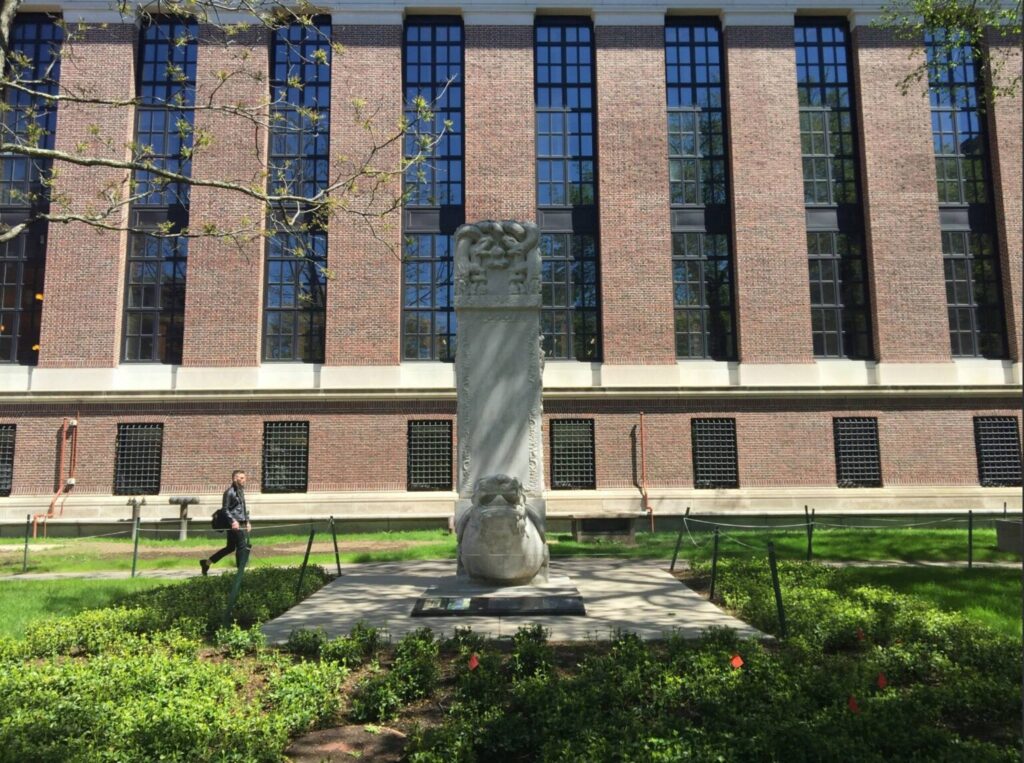
1936: The Harvard Bixi Tercentenary Stele is gifted and erected by Harvard Chinese alumni in Harvard Yard, beside Boylston Hall. The 27-ton stele commemorates the founding of Harvard College in 1636 and celebrates the importance of cultural learning in and between the United States and China. (Visit https://fairbank.fas.harvard.edu/300th-anniversary-stele/ to access a 3D scan of the monument.)
1936
Fairbank returns to Harvard with Wilma D. Cannon (Radcliffe ‘1931), whom he had married in Peiping, as a newly-appointed instructor in History. He begins teaching Chinese history at Harvard and building out a curricular program on modern China.
Mid-Twentieth Century: Cold War Exchanges (1940-1960)
1941
In 1941, the Department of Far Eastern Languages offered its first HEAL (History and East Asian Languages) Ph.D., jointly with the Department of History.
1950
Harvard-Yenching Institute Studies Series initiated.
1951
Harvard University Press publishes Fairbank’s influential book The United States and China (the best-selling account of modern China up to 1980).
1954
James Robert Hightower, future chair of the Committee on East Asian Studies (1960-64) and the Department of Far Eastern Languages (1961-65), inaugurates “Humanities 112: Classics of the Far East,” as a part of the Harvard College Gen Ed curriculum. Hightower’ course has 24 enrollees in its first year.
1954
Harvard-Yenching Institute establishes a visiting scholars program to encourage Chinese scholars to conduct China studies research and share their work with Western audiences.

1955: The Center for East Asian Studies opens on Dunster street, with John K. Fairbank as its director.
1955
Harvard sets up the Chinese Economics and Political Studies program with funds from the Ford Foundation and the Carnegie Corporation.
1956
After attempts to set fire to collections and three-to-four inches of flooding in Boylston Hall, Harvard Yenching Institute and its library relocate to its present location at 2 Divinity Avenue.
1956
Harvard starts publishing the Harvard East Asian Monograph Series. There are now over 400 published titles.
1957
The Regional Studies—East Asia (RSEA) MA program, an interdisciplinary area studies master’s degree program designed for the study of languages, societies and cultures of East Asia, is founded.
1957
The Center for East Asian Studies is renamed the East Asian Research Center.
1958
The Harvard-Yenching Institute relocates from Boylston to 2 Divinity Avenue, its current location.
Late-Twentieth Century: Opening up (1960-1990)

1962: The Starr family donates two stone lions originally from Beijing to Harvard-Yenching Institute.
1963
Harvard buys the Ambassador Hotel, and eventually becomes home to the Fairbank Center and other regional studies centers.
1972
Nixon visits China and meets CCP Chairman Mao Zedong. He signs the Shanghai Communiqué, setting “the stage for improved U.S.-Sino relations by allowing China and the United States to discuss difficult issues, particularly Taiwan. This allows U.S.-based scholars to start visiting China.
1973
Harvard Professor Ezra Vogel (傅高义) visits China and meets Deng Xiaoping and Chen Yun.
1973
Ezra Vogel becomes Director of the Center.
1975
Roy Hofheinz Jr. becomes Director of the Center.
1977
Kwang-chih Chang joins a faculty position at Harvard in 1977. Under his leadership Harvard is established as a leading institution in East Asian archaeology.
1977
Following John Fairbank’s retirement, the name of the Center changed from the Center for East Asian Research to the Fairbank Center for Chinese Studies.
1978
Philip Kuhn joins Harvard’s faculty and starts teaching Chinese history following Fairbank’s retirement.
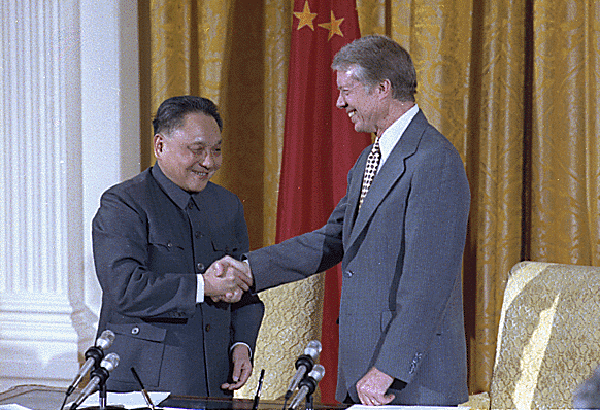
1979: Under U.S. President Jimmy Carter, the U.S. makes diplomatic relations with China, briefly severing their relations with Taiwan, but allowing scholastic exchange.
1980
Philip A. Kuhn becomes Director of the Center.
1981
Ma Ying-Jeou, future president of Taiwan, receives S.J.D. degree from Harvard Law School.
1982
An Wang Postdoctoral Fellowship established. This fellowship supports research by having fellows spend a year at the Fairbank Center to work on book manuscripts or articles.
1986
Robert MacFarquhar becomes Director of the Center.
1988
Modern China Lecture Series Neuhauser Lecture
Turn of the Millennium: Deepening Mutual Understanding (1990-2010)
1991
Harvard University Press publishes Philip Kuhn’s Soulstealers: The Chinese Sorcery Scare of 1768, (a social history monograph on mass hysteria in the Qing dynasty); its translation becomes a bestseller in China.
1992
James L. Watson becomes Director of the Center.
1993
“Harvard-China Project” on Energy, Economy and Environment is founded as part of the Harvard John A. Paulson School of Engineering and Applied Science.
1995
Ezra Vogel returns as Director of the Center.
1997: Former President of the PRC Jiang Zemin visits the US and Harvard. His visit incited many protests by various human rights organizations.
1997
In July, the Harvard University Asia Center was founded with a commitment to “facilitating the cross-cultural study of Asia at Harvard University.”
1999
Elizabeth J. Perry becomes Director of the Center.
2002
Wilt L. Idema becomes Director of the Center.
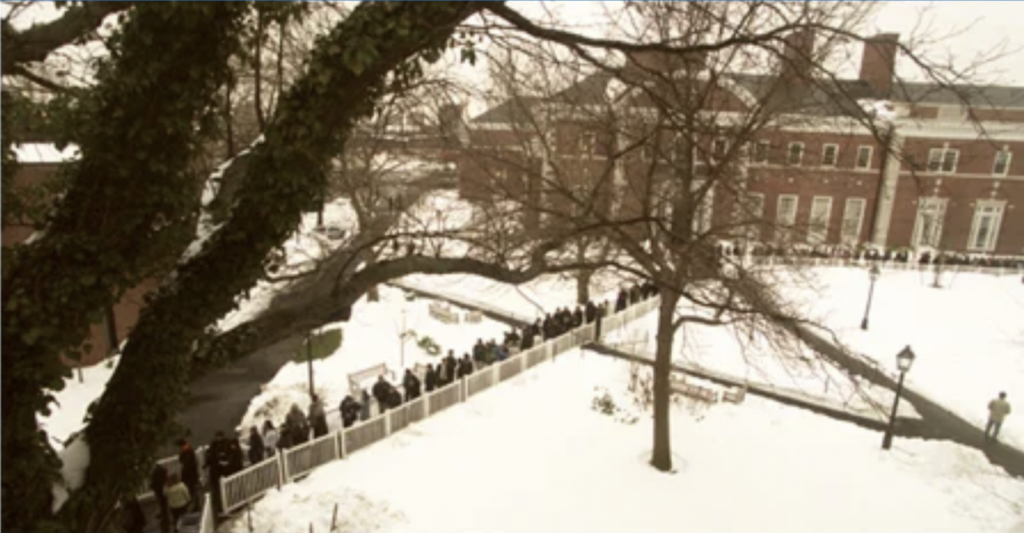
2003: Former Premier of the People’s Republic of China, Wen Jiabao, visits Harvard, remarking, “I hope the young people of China and the young people of the United States will join their hands more closely.”2003: Former Premier of the People’s Republic of China, Wen Jiabao, visits Harvard, remarking, “I hope the young people of China and the young people of the United States will join their hands more closely.”
2005
Harvard received $15 million from the Victor and William Fung Foundation to expand the University’s Asia Center. The H.C. Fung Library is renamed, bringing together world-class collections on study of China, Japan, Russia, and Eurasia. The Fairbank Collection constitutes an important part of the collection, its highlight on contemporary China materials.
2005
Roderick Macfarquhar returns as Director of the Center.
2006
William C. Kirby becomes Director of the Center.
2006
The Harvard China Fund is founded.
2007
Martin King Whyte becomes Director of the Center.
2008
China Programs (part of the current Rajawali Foundation Institute for Asia) joins the Ash Center for Democratic Governance and Innovation at Harvard Kennedy School, under the leadership of Director Anthony Saich, member of E-board of Fairbank Center.
2008
Harvard President Drew G. Faust meets with the then vice President of China Xi Jinping, “exchanging views on further promoting China-U.S. education cooperation.”
2008
William C. Kirby returns as Director of the Center.
Contemporary Era: Scholarship Amid Tension (2010-Present)
2010
Harvard Center Shanghai opens, representing an important step in Harvard’s long engagement with China and Asia.
2010
Mark Elliot becomes Director of the Center.
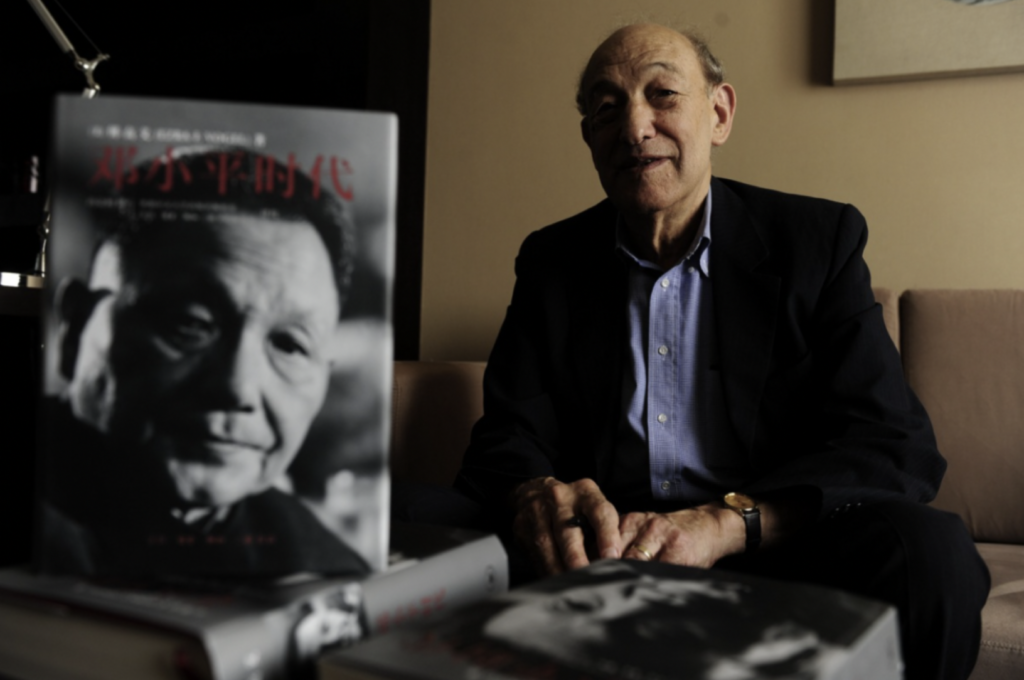
2011: Harvard University Press publishes Harvard Professor Ezra Vogel’s Deng Xiaoping and the Transformation of China, a critically acclaimed biography detailing the enormous impact of this leader in world history.
2011
William C. Kirby returns as Director of the Center.
2013
Mark Elliot returns as Director of the Center.
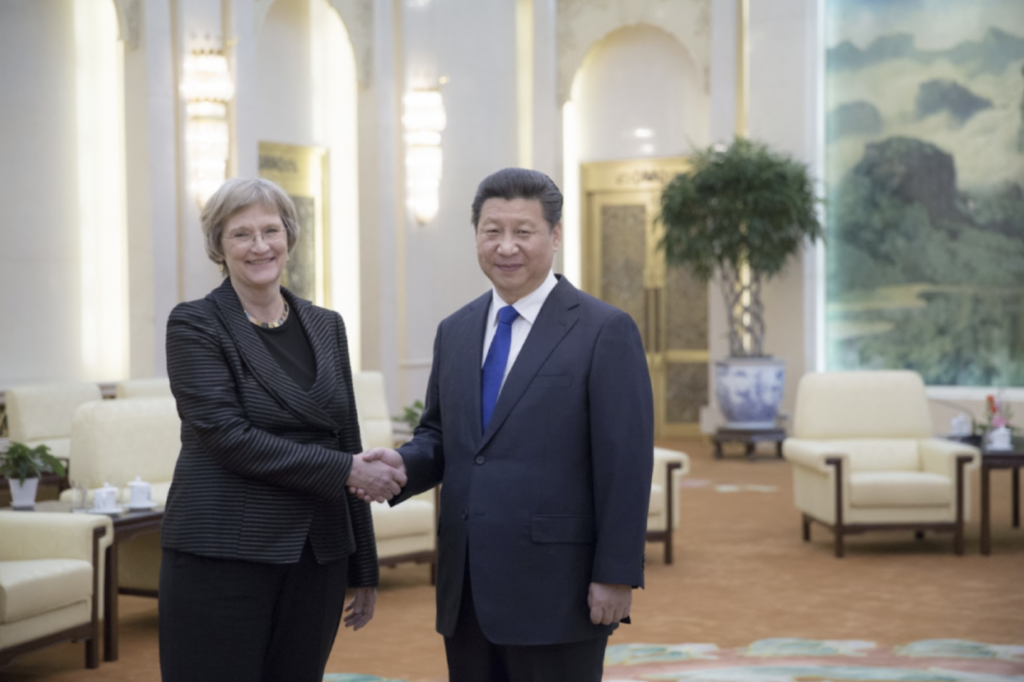
2015: Harvard President Drew G. Faust met with President of China Xi Jinping in Beijing and “discussed a number of issues of mutual importance for China and Harvard, including efforts to combat the threat of climate change and continuing collaborations among faculty and scholars.”
2016
Fairbank Centers holds two-day symposium to celebrate the 60th Anniversary of its founding.
2016
A new exhibition featuring works by Fairbank’s wife and sisters opens.
2016
Michael Szonyi becomes Director of the Center.
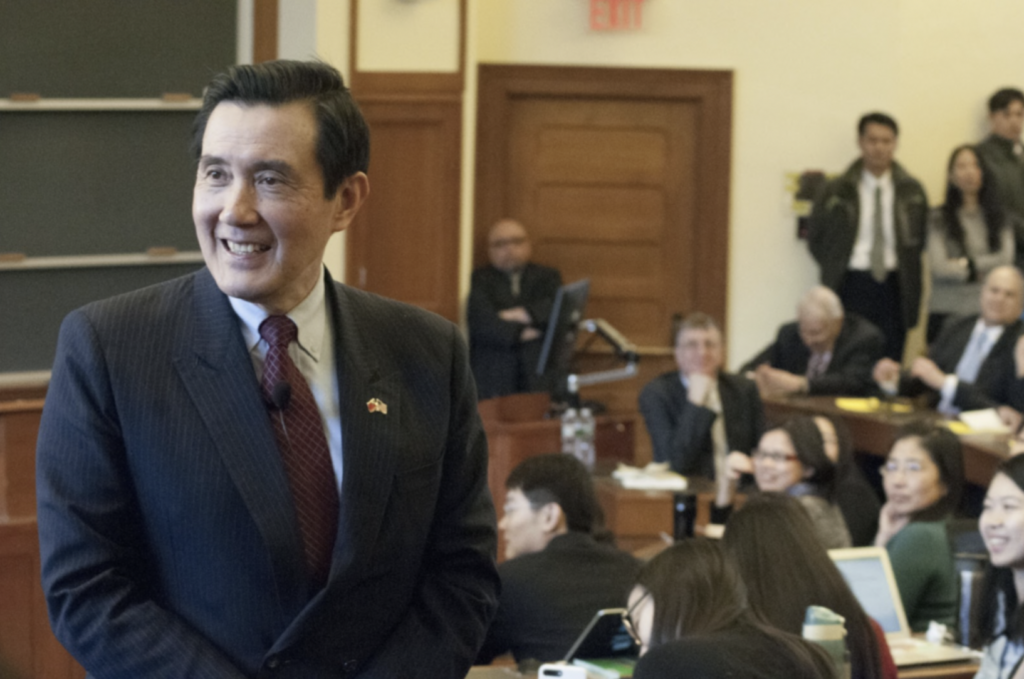
2017: Former Taiwanese President Ma Ying-jeou gives a talk at the Harvard Law School about his experiences as the leader of Taiwan and how his time as a Harvard Law student impacted him.
2017
Fairbank Center for Chinese Studies presents a world debate exhibition of “Dazibao and Woodcuts from 1960s China,” commemorating the 50th anniversary of the beginning of the Cultural Revolution.

2017: President Tsai Ing-wen meets a delegation of cross-strait and U.S.-Sino relations scholars from the Fairbank Center to hear expert opinions and deliberate cross-strait relations and the future of Taiwan.
2018
A cross-strait affairs delegation from the Fairbank Center for Chinese Studies at Harvard University returns to Taiwan to visit and deliberate with President Tsai Ing-wen.
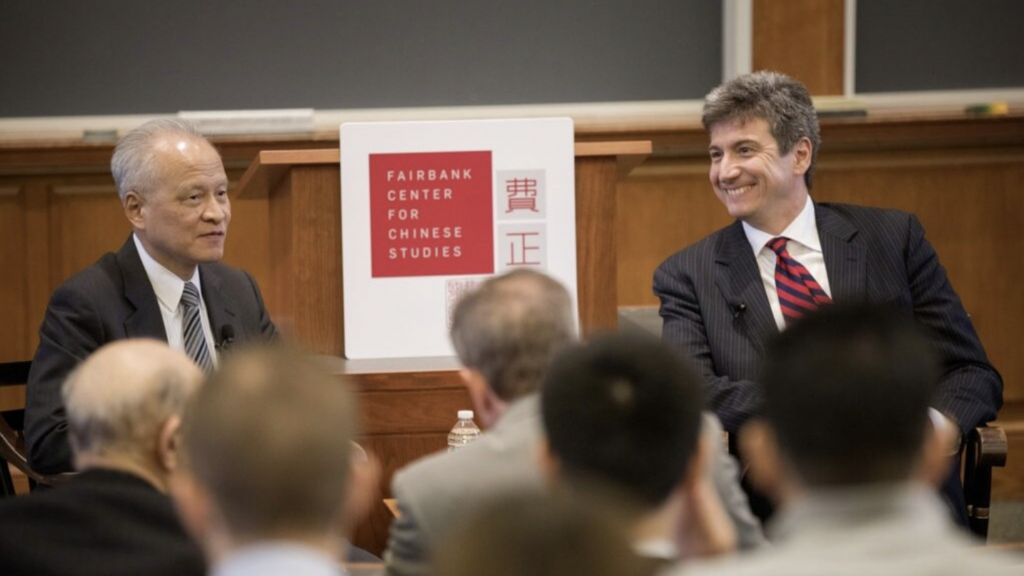
2018: China Ambassador Cui Tiankai visits the Fairbank Center.
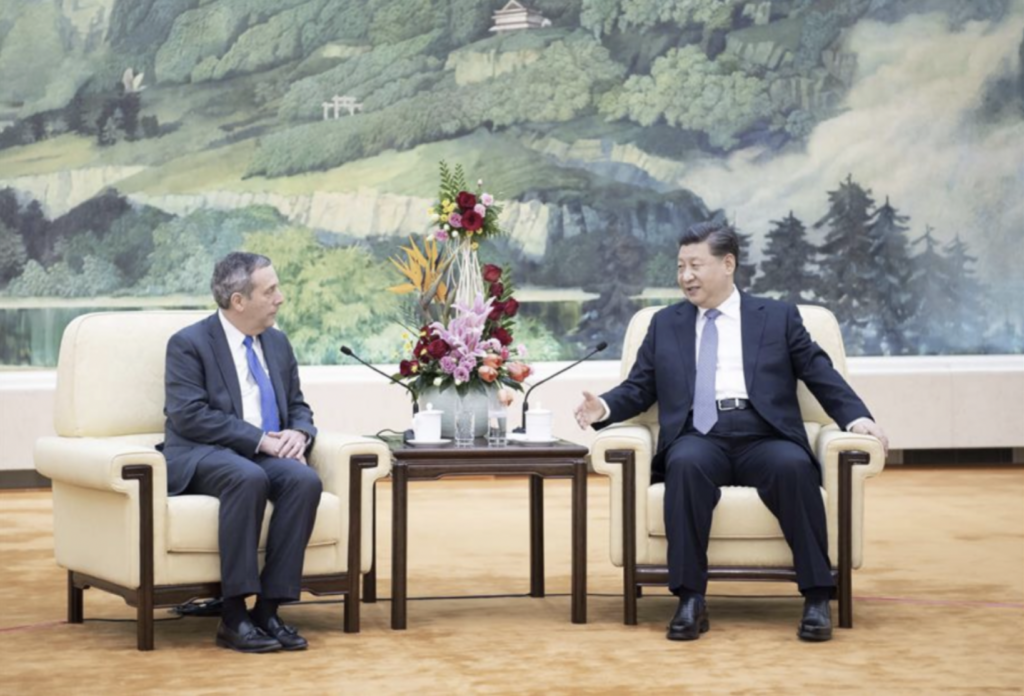
2019: Harvard president Laurence Bacow meets President of China Xi Jingping “to discuss the importance of learning and of cultural and educational exchanges.”
2019
Members of the Taiwan Workshop at Harvard Fairbank Center for Chinese Studies meet Vice President Chen Chien-jen 陳建仁 in the Presidential Office in Taipei.
2019
Harvard Chinese Art Media Lab (CAMLab) is launched, explores multimedia story-living and immersive artistic-cum-spiritual experience in Chinese art. https://camlab.fas.harvard.edu/
2019
(Stats fact) In 2019, 1440 Chinese students attended Harvard.
2021
Harvard University Press publishes From Rebel to Ruler: One Hundred Years of the Chinese Communist Party by Tony Saich, the story of the Chinese Communist Party’s rise to power. The CCP celebrates its hundredth anniversary.
Written, researched, and designed by Frank Zhou and Kareena Stowers, with help from James Evans.
